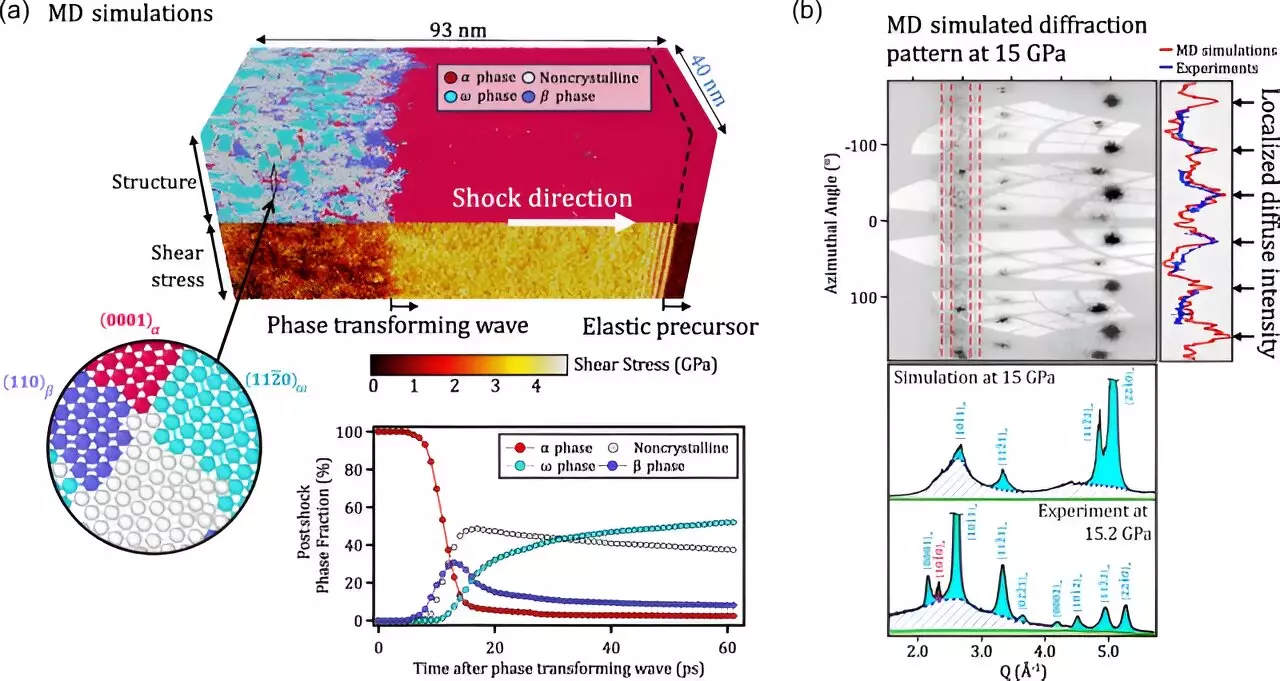Materials science plays a pivotal role in the advancement of modern technology, particularly in fields where components operate under harsh conditions, such as nuclear energy and military applications. The integrity and performance of materials in these scenarios are paramount, as they must endure not only high pressures and extreme temperatures but also corrosive environments. Consequently, a deep understanding of material behavior on a microscopic scale becomes essential for engineers and scientists aiming to innovate and enhance material properties for future applications.
Recent research from scientists at the Lawrence Livermore National Laboratory (LLNL) delves into the behavior of zirconium, a metal known for its resilience and application in nuclear contexts. By compressing single crystal samples of zirconium, the team unveiled complex deformation patterns that challenge existing assumptions about material behavior under stress. The findings have been published in the esteemed journals, *Physical Review Letters* and *Physical Review B*, illuminating the intricate mechanisms at play when materials undergo significant strain.
When subjected to high stress, materials exhibit various methods of stress relief. In their study, the LLNL team identified several mechanisms including dislocation slip, crystallographic twinning, shear-induced amorphization, and even phase transitions. According to Saransh Soderlind, the principal investigator of the study, understanding these underlying factors is critical for advancing predictive models that can forecast the behavior of materials when pushed to their limits.
Zirconium, specifically, had its deformation complexity magnified due to a shift in its crystal structure in response to increased pressure. The research provides new insights into how defects known as dislocations facilitate the plastic deformation of metals, especially when compressed. By analyzing how these defects move along specific crystallographic planes, researchers can build more accurate models of structural integrity under duress.
The research employed groundbreaking techniques like femtosecond in-situ X-ray diffraction, which allowed scientists to observe the atomic-level changes in zirconium as it was compressed. Over nanosecond timescales, the team noted patterns of atomic disorder never seen before in elemental metals. This unexpected finding suggests that there are multiple transformative pathways for crystal structure, further complicating our understanding of zirconium’s mechanical behavior under high pressure—a phenomenon not present in its polycrystalline counterpart.
The implications of this research are significant, not just for zirconium but for materials used across various industries, notably in the nuclear sector where zirconium alloys are frequently utilized due to their strength and minimal neutron absorption. The newfound knowledge about deformation dynamics can lead to the development of more resilient, lighter, and more cost-effective materials, enhancing performance in extreme environments.
The intricate study of zirconium conducted by LLNL scientists marks a critical advancement in materials science. The discovery of complex deformation patterns and the potential for various phase transitions at the atomic level has opened new avenues for research and application. As we strive for innovative solutions in extreme environments, this foundational work will be instrumental in guiding the design and development of future materials.

